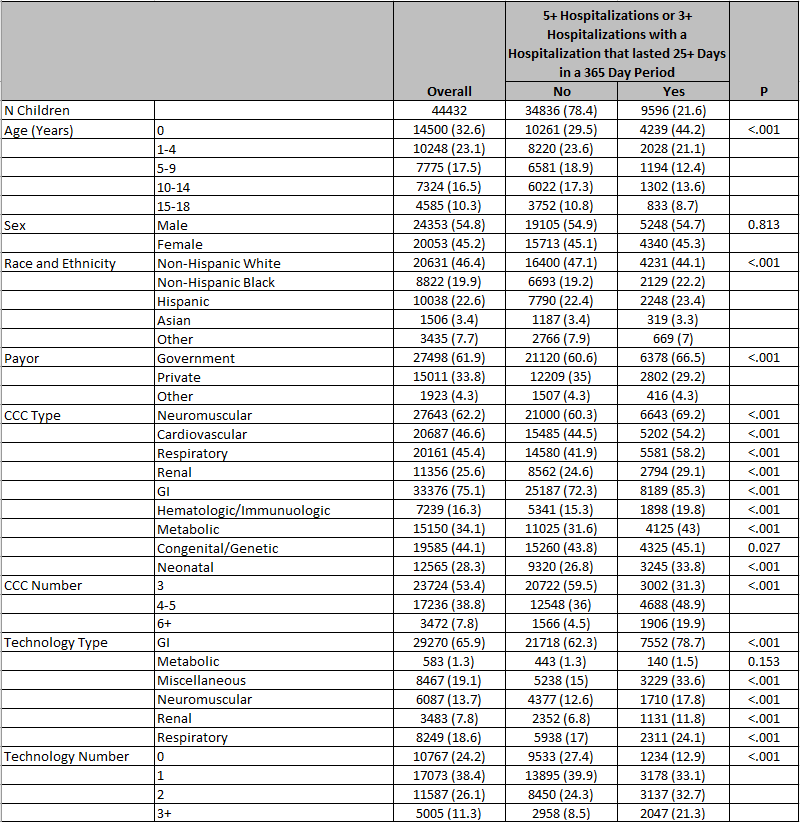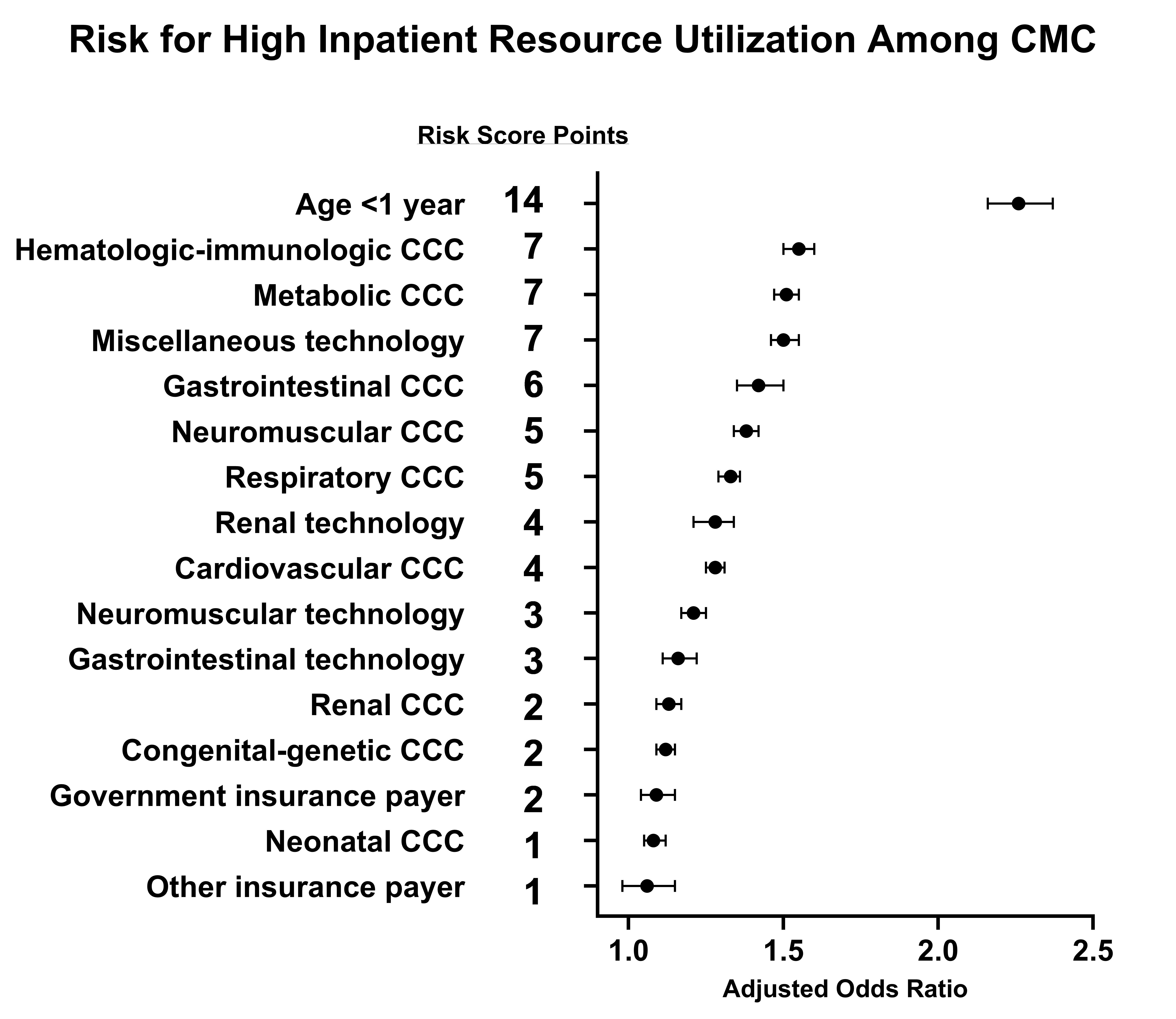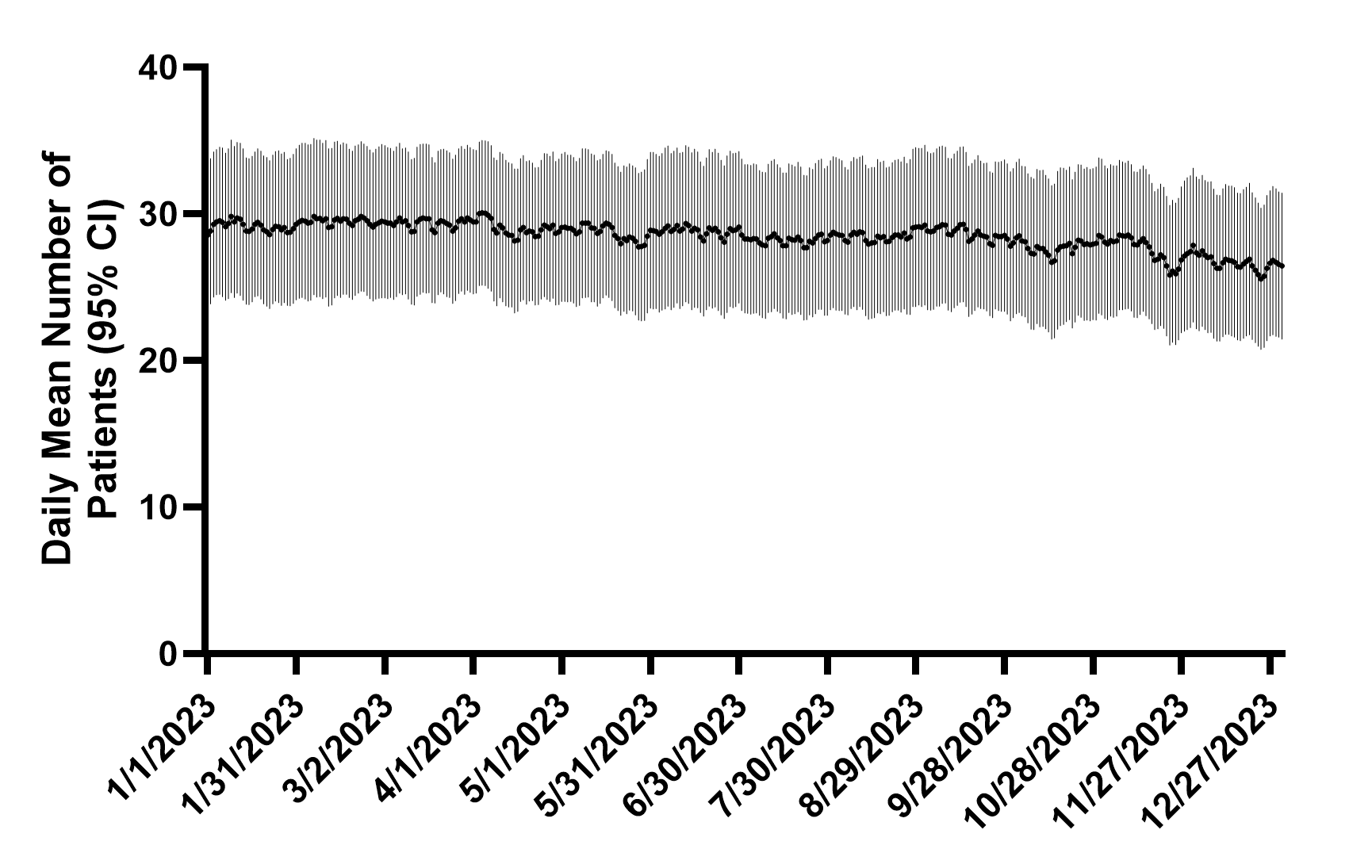Hospital Medicine 3: Systems/Population-based Research
Session: Hospital Medicine 3: Systems/Population-based Research
138 - A Risk Score to Predict Recurrent High Intensity Inpatient Resource Utilization for Children with Medical Complexity.
Sunday, April 27, 2025
8:30am - 10:45am HST
Publication Number: 138.3697
Charles Maloy, Children's Mercy Hospitals and Clinics, Lenexa, KS, United States; Matthew Hall, Children's Hospital Association, Lenexa, KS, United States; Jessica Bettenhausen, Children’s Mercy Kansas City, Kansas City, MO, United States; Yui-Yee R. Chan, Children's Mercy Hospitals and Clinics, Kansas City, MO, United States; Leah Jones, Children's Mercy Hospital, Kansas City, MO, United States; Kathryn E. Kyler, Children's Mercy Kansas City, Kansas City, MO, United States; Laura Plencner, Children's Mercy Hospitals and Clinics, Kansas City, MO, United States; Jessica Markham, Children's Mercy Kansas City, Kansas City, MO, United States; Jacqueline Walker, Children's Mercy Hospitals and Clinics, Kansas City, MO, United States; Smit Shah, Children's Mercy Hospitals and Clinics, overland park, KS, United States; Sian Best, Children's Mercy Hospitals and Clinics, Kansas City, MO, United States; Jonathan Ermer, Children's Mercy Hospitals and Clinics, Kansas City, MO, United States; Shelby Chesbro, Children’s Mercy Hospital, Kansas City, MO, United States; Maria Newmaster, Children's Mercy Kansas City, Kansas City, MO, United States; Henry T. Puls, Children's Mercy Kansas City, Kansas City, MO, United States

Charles Maloy, DO (he/him/his)
Hospital Medicine Fellow
Children's Mercy Hospitals and Clinics
Lenexa, Kansas, United States
Presenting Author(s)
Background: Children with medical complexity (CMC) use a greater amount of inpatient resources and stand to benefit from unique care models and coordination. However, hospital resources can be limited, and it is unclear which CMC are at greatest risk for repeated and prolonged hospital stays. A better understanding of which CMC are high resource users could improve hospital and staff planning.
Objective: To develop a risk score predictive of recurrent high intensity inpatient utilization among CMC.
Design/Methods: We conducted a retrospective cohort study of children < 18 years old with ≥3 complex chronic conditions (CCC) discharged from one of 48 children’s hospitals in the Pediatric Health Information System during 2021 and 2022. To reflect CMC typically cared for by a general medical service, children with cardiac procedures, dialysis, oncology, or transplant CCCs, and index hospitalization mortality were excluded. We used multivariable logistic regression to determine factors present on the index hospitalization associated with ≥5 hospitalizations or ≥3 hospitalizations with one lasting ≥25 days within any 365-day period (high inpatient utilization) in 2021-2023. We developed a high inpatient utilization risk scoring system using model coefficients and defined the optimal risk score cutoff to maximize sensitivity and specificity. We then applied the risk score cutoff to children discharged in 2023 to determine the total predicted daily volume on 50th, 75th, and 90th percentile days for each hospital.
Results: Of 44,432 included children , 9,596 (21.6%) had high inpatient utilization (Table). Children under 1 year of age had the highest odds of high inpatient utilization (OR 2.26 [95% CI: 2.16, 2.37]) and all CCC and technology groups (except metabolic) met statistical significance (Figure 1). The optimal risk score cutoff was 29 and predicted 17,411 (39.2%) CMC as high inpatient resource utilizers in 2023; the actual to predicted ratio of CMC with high inpatient utilization was 0.55 (± 0.11). The mean daily census of the 50th, 75th, and 90th percentiles across hospitals was 28 CMC (± 17), 34 (±18), and 39 (±19). Figure 2 shows the mean predicted daily hospital volume of CMC across the 48 hospitals.
Conclusion(s): It is feasible to develop a risk score predictive of high inpatient utilization among CMC. There is substantial variability in volume of CMC with high utilization between pediatric hospitals. The risk score cutoff values can be modified to suit different applications and institution-specific objectives.
Table: Patient Characteristics
 Patient characteristics of children with 3+ complex chronic conditions (CCC) hospitalized at one of 48 children’s hospitals during 2021-2022. Statistical comparisons between children with and without high inpatient resource use made using chi-square tests.
Patient characteristics of children with 3+ complex chronic conditions (CCC) hospitalized at one of 48 children’s hospitals during 2021-2022. Statistical comparisons between children with and without high inpatient resource use made using chi-square tests. Figure 1: Risk for High Inpatient Resource Utilization Among CMC
 Adjusted odds ratios with 95% confidence intervals depicted on the figure with integer risk score points for each exposure variable listed immediately left of the y-axis.
Adjusted odds ratios with 95% confidence intervals depicted on the figure with integer risk score points for each exposure variable listed immediately left of the y-axis. Figure 2: Mean Predicted Daily CMC Census
 The mean predicted daily hospital census of CMC and 95% confidence intervals across the 48 hospitals.
The mean predicted daily hospital census of CMC and 95% confidence intervals across the 48 hospitals. 
